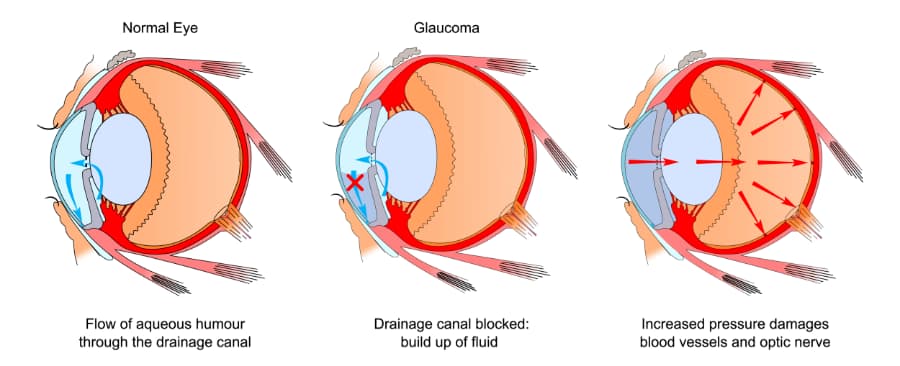Glaucoma is a group of serious eye conditions that can lead to loss of vision, and even blindness, over time. It is estimated that approximately three million Americans have some form of glaucoma. Unfortunately, nearly half of those individuals do not even know that they have the disease. The reason is, glaucoma is typically painless and evolves slowly over time. It is important to undergo routine eye care to detect early signs of glaucoma so that it may be treated and monitored to prevent vision loss.
To better understand glaucoma, it is necessary to first know how the brain interprets vision. As light rays enter the eye, they first pass through the cornea (the clear window to the eye). These light rays then follow a path through the pupil and then the lens of the eye. Finally, the light rays are projected onto the retina (a thin tissue layer that lines the back of the eye and acts much like the film in a camera). Once these rays hit the light-sensitive retina tissue, signals are sent to the brain via the optic nerve. These signals are then interpreted by the brain as a visual image, allowing us to see. Glaucoma is a group of eye diseases that gradually damages the optic nerve, causing irreversible vision loss.
The optic nerve becomes damaged when the natural fluids of the eye are impeded from draining properly, causing intraocular pressure (IOP) to build. Over time, this elevated IOP damages the optic nerve. When the optic nerve becomes damaged, the visual image perceived by the brain is incomplete. Glaucomatous damage to the optic nerve typically results in decreased peripheral vision. If left untreated, glaucoma can eventually lead to tunnel vision or complete loss of vision.

Eye pressure builds as a result of inadequate drainage of the fluid that is constantly being produced by the eye. In a healthy eye, the front portion (anterior chamber) of the eye is filled with a clear fluid known as aqueous humor. This nutrient-rich substance naturally circulates from behind the iris to the anterior chamber in order to maintain healthy eye pressure. Pressure within the eye is a result of the amount of fluid that is produced by the eye and the amount of fluid that is drained from the eye. Aqueous humor is drained by the eye through a complex system known as the trabecular meshwork in the drainage angle. Open angle glaucoma is a result of an improperly functioning trabecular meshwork that does not allow the fluid to drain sufficiently. As a result, the pressure within the eye elevates over time and results in damage to the delicate optic nerve.


